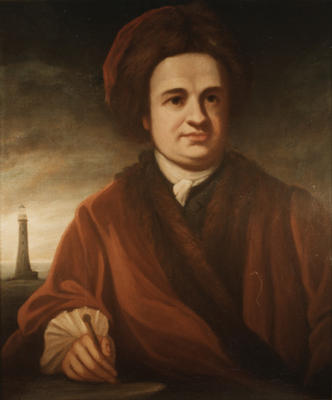
Copy of a portrait of civil engineer John Smeaton (1724-1792), painted c 1770.
Smeaton, from Yorkshire, was the foremost civil engineer of his day. In 1755 he was commissioned by Glasgow Town Council to conduct a survey of the Clyde between Glasgow Bridge and Dumbarton, and to advise on the feasibility of deepening the river. Finding a depth of just over 1 foot in places, he suggested building a dam at Marlin Ford, 4 miles downriver from Glasgow Bridge, with a lock to allow ships to pass. Flooding problems caused the abandonment of the scheme in 1762.
A more successful venture with which Smeaton was associated was the Forth and Clyde Canal, with its important Glasgow Branch. He surveyed its route, and was appointed its chief engineer. The canal reached Hamiltonhill on the edge of Glasgow in 1777, and although financial problems delayed its completion, it was opened in 1790.
Smeaton was also in charge of the building of a new Glasgow Bridge, from Jamaica Street to Gorbals, which was the most important river crossing from its opening in 1772 until it was replaced in 1836.
Reference: P7/2/8
Reproduced with the permission of Strathclyde University Archives
Keywords:
bridges, canals, civil engineering, civil engineers, dams, Forth and Clyde Canal, Glasgow Bridge, lighthouses, locks, Marlin Ford, navigation, River Clyde, shipping
You have 2 images in your photo album.